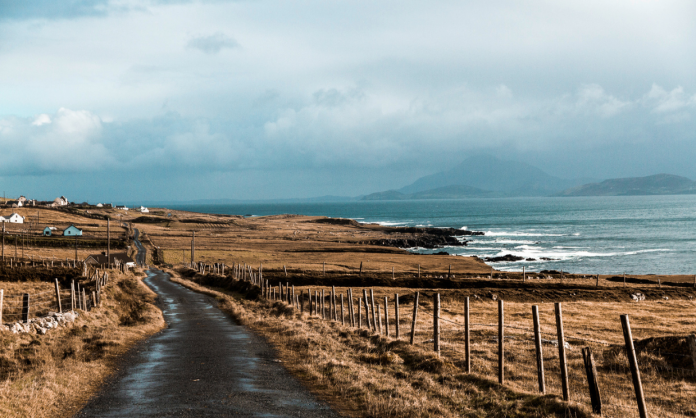By James Reddiough
Clare Island was a well populated island between 1700 and 1845. The island was self-sufficient in the 1790’s and had sufficient food and fertiliser to meet the needs of the people. They leased and owned the land in common under the Rundale System. They tilled the soils using the lazy beds and they lived closely together in clusters or clachans that were common in the west of Ireland at the time.
They made ridges called lazy beds and manured them with seaweed that was plentiful on the shore. The potato with oatmeal and buttermilk was their main form of nourishment. They had fish too. The people worked on the meitheal system and they paid the rent to the landlord in bulk.
They had the infield of good land and the outfield system for pasture; the infield was used for arable farming. They also grazed in commonage. They were content once they had enough potatoes and turf to keep them at their ease. They had their own law to keep the peace. They had their own economy and exported calves to the richer grazing area in the west as well as selling herring and wool and kelp. Due to this prosperity and food supply there were a good deal of marriages and families and the population stood at 1,600 before the advent of the Great famine according to the census of 1841.
But after the Napoleonic wars of 1815 a crisis came and there was a good degree of distress that led to a change in the fortunes of the island so much so that there were near famine conditions on the island in 1822 and this would continue into 1829 and there was a poor law report for the 1830’s that reflected the poor state of the population in those years. The old way of life on the island began to go into decline. The men were forced due to falling incomes to migrate mainly to England to earn the money for the rent. The clachan system of settlement where people lived in settlement clusters and the farming land use system known as Rundale ended or went into decline also.
Then came the potato blight in 1845 which proved disastrous for a people who relied so heavily on it for nutrition. The overdependence on the potato was all too evident. The population of the island went from 1,600 in 1841 to 600 by the end of the century. The grazier or cattle rancher became the main tenant and effectively ended the rundale and commonage system. The poorer people who survived the famine were forced to eke out an existence on the marginal lands of the bog and moor and were in clear distress.
There was a pattern of sparsely or depopulated grazing lands for cattle and the more densely populated bog and moor. The rent was no longer paid in bulk but was paid to the landlord in individual leases. By 1850 it was clear that the people on the island could not survive without direct state intervention and the clergy acted as the link between the people and the agents of the State.
After the famine the clachan system ended as a form of settlement. The former Rundale system of farm and land use ended too. The old former tenant who merely subsided was replaced by the new tenant who was a cattle rancher. This was in the early 1850’s when from then on it was felt that Clare Island needed to be seen as a problem region. At the time the Land League was founded in 1879 there was a clear need for state aid to sustain life on the Island.
A number of commissions among them the Bessborough commission concluded that there was a need to save the island. There were a number of relief works in a process that was called constructive unionism or killing Home Rule by kindness, this would have been about 1886 when the Land League and the Irish party were campaigning for national independence and land reform.
Then in 1892 the Congested Districts Board published a baseline report on the island and they purchased the island on the 15th March 1895 and began to work on remodelling the island and determine rents and rates for each stripe of land that had been bought and striped into individual farm holdings with a house on each holding. They also had shore and turbury rights. This ended the former system for ever. The congested district board took the following actions: they determined grazier rights, annual rents, seaweed and turbary rights as well as deciding the rent, poor law rates and county Cess also.
The Congested Districts Board saw Clare Island as a jewel in the crown and as a very good example of remodelling; and they were proud of their work and they were glad that they had improved the lot of the people and the good effects of their work can be seen to today as they have maintained a viable population on Clare Island to this day.








